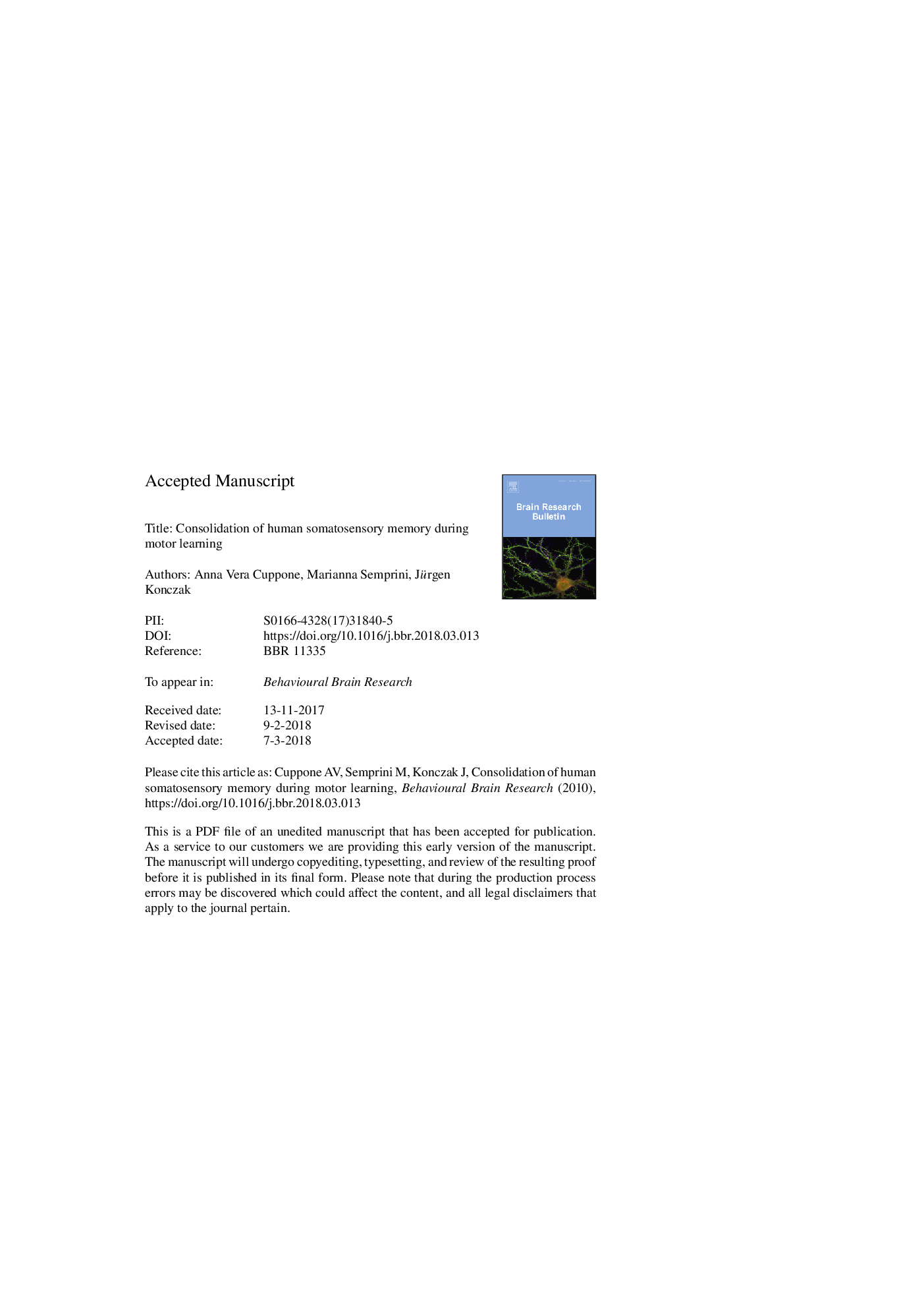ترجمه فارسی عنوان مقاله
تثبیت حافظه سموتوسنسسی انسان در هنگام یادگیری حرکتی
عنوان انگلیسی
Consolidation of human somatosensory memory during motor learning
| کد مقاله | سال انتشار | تعداد صفحات مقاله انگلیسی |
|---|---|---|
| 128626 | 2018 | 34 صفحه PDF |
منبع

Publisher : Elsevier - Science Direct (الزویر - ساینس دایرکت)
Journal : Behavioural Brain Research, Volume 347, 16 July 2018, Pages 184-192
ترجمه کلمات کلیدی
تثبیت، یادگیری، حافظه، کنترل موتور، نگهداری، سموتوسنسوری،
کلمات کلیدی انگلیسی
Consolidation; Learning; Memory; Motor control; Retention; Somatosensory;

